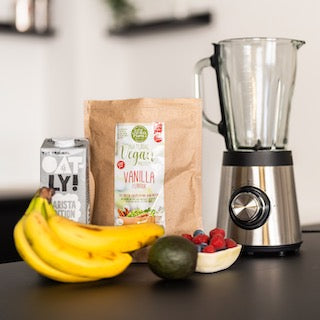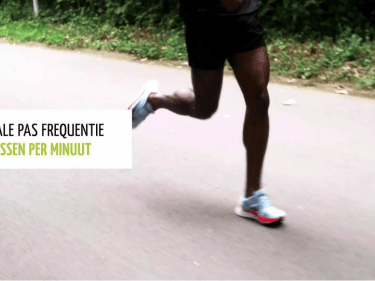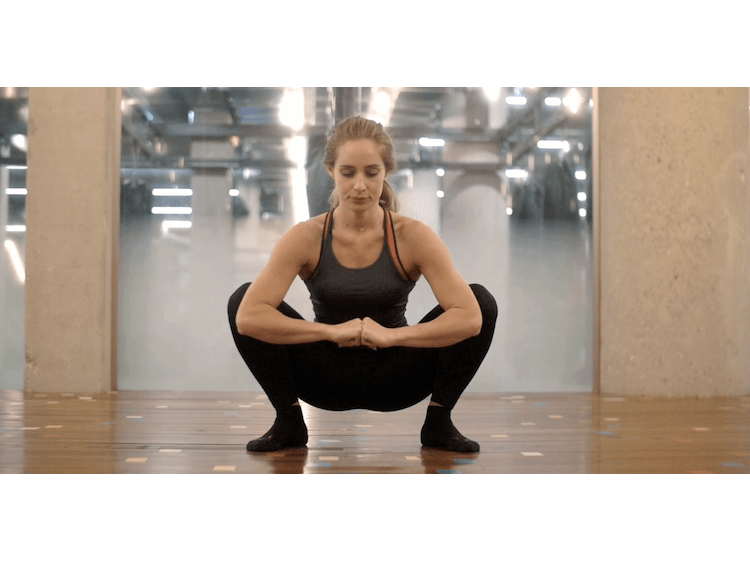
I am Jermain Breidel, running coach at Vondelgym and captain of the Patta Running Team in Amsterdam. I am also a long distance runner. In the near future, I will be providing you with running tips to help you get started running and training more efficiently. In this first edition, we will talk about the ideal stride frequency.
Ideal stride frequency when running
In this article, we will discuss one of the basics of running: The ideal stride frequency.
For runners, the ideal stride frequency is around 180 paces per minute. When you maintain this frequency, you run easier and notice that your running is smoother. I'll explain how you can consciously work on this.
180!
 There are many different ways of running. And if we zoom in on stride frequency, there is just as much difference. Many people run in an almost leaping manner, making almost as many height meters as length meters by using force with each push-off. Because of this forceful push-off, these runners make large strides and have a long whipping phase. A good way to run more efficiently is to consciously reduce your stride length to 180 paces per minute.
There are many different ways of running. And if we zoom in on stride frequency, there is just as much difference. Many people run in an almost leaping manner, making almost as many height meters as length meters by using force with each push-off. Because of this forceful push-off, these runners make large strides and have a long whipping phase. A good way to run more efficiently is to consciously reduce your stride length to 180 paces per minute.
What are the benefits of a shorter stride?
- Walking with a shorter stride forces you to make lighter strides and use less force.
- Your feet stay under /close to your body with a shorter stride. This makes you more likely to land with your mid/front foot instead of your heel.
- Your foot rolls off better when you make shorter strides instead of running with a powerful push off that additionally creates a lot of impact when landing.
How do you adjust your current stride frequency?
Step 1: determining your current stride frequency
Determining your current stride frequency can be done in a fairly simple way. Start running the way you always do, and for one minute count how many times your right or left foot touches the ground. Multiply this number by 2 and you know what your current stride frequency is. Typically, for most runners this will be under 170 paces. For taller people, it is often even a bit lower than for shorter people.
Step 2: increasing your stride frequency
There are verach variety of ways to adjust your stride frequency:
Put on music
The nice thing is that there is music that has exactly the same number of beats per minute that you want to make passes. So this is super convenient because you can then just walk to the rhythm of the music and get the right frequency. Do a Google search on "Music 180 bpm" and you will find more than enough music with this tempo.
Metronome
You can buy a metronome at a music store, or download a metronome app on your smartphone. For example, the app iSmoothRun has a built-in metronome. Compared to many other apps, it remains active and accurate. Even when the phone is locked. In addition, it also records your cadence. For example, you can turn on the metronome at the beginning of your workout and then run for 10 minutes at the metronome's pace. Then you turn off the metronome and walk for five minutes without the metronome.
After those five minutes, turn it back on and see how much of a difference there is. Throughout your workout you can repeat this. In the app, you can then view the results in detail.
Gradually increase your stride frequency or go all at once?
To increase your frequency, you can do two things:
1. increase your frequency by two steps per minute each week to gradually get to the 180 steps per minute mark
2. apply the new frequency all at once and let your body get used to it immediately
See what feels right for you and then choose one of these two strategies. There is no right or wrong, the important thing is that your body gets used to the new frequency so that you will permanently run at the 180 paces per minute.
Results
To see if stride frequency improves, it is important to also run without a metronome and without music. This is also a good method to get to know your natural stride frequency. After running a few times with metronome or music, schedule a workout where you run without aids. Log the workout with your smartphone or with a step counter and run the entire workout by feel. Analyze/calculate the average stride frequency at home and, based on the results, adjust your next workout if necessary.
Once you have adjusted the stride frequency to a pace of around 180 you will find that you start running much easier. It takes less strength and effort.
We'd love to hear about your experience adjusting your stride frequency!
Also read:
- THE 10 PERCENT RULE IN RUNNING
- PROTEIN AND ENDURANCE SPORTS, DO THEY GO TOGETHER? YES!
-ROAD TO MARATHON! WITH JERMAIN BREIDEL
- ROAD TO MARATHON! SETBACK, INTERVAL AND FARTLEK
Also check out our blog for more training-related articles.
















